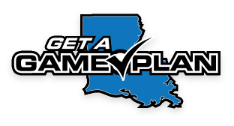Preparation & Response Resources
Disaster Preparedness for Practices
Children have physical, mental, behavioral, developmental, communication, therapeutic, and social needs that need to be addressed in all aspects of disaster preparedness, response and recovery. Pediatricians play a key role in preparing and treating families before and after Louisiana disasters. While the COVID-19 pandemic has consumed our daily lives, we cannot lose sight of the fact that Louisiana is a state prone to natural disasters, and hurricane season is upon us. Below is a list of resources for pediatricians and parents to assist in mitigating the negative impacts of disasters on practices and families.
Preparing Your Practice:
Preparedness Checklist for Pediatric Practices – AAP
Hurricane Preparedness Information for Pediatric Practices – AAP
Hurricane Response & Recovery Information for Pediatric Practices- AAP
Preparing for Hurricanes During the COVID-19 Pandemic – CDC
Safety Information for Health Care Professionals – CDC
Talking to Children About Disasters- AAP
Guidelines for Care of Children in the Emergency Department checklist- AAP
Vaccine Storage and Handling
Vaccine Storage and Handling – AAP
Vaccine Storage and Handling Toolkit – CDC
Health Concerns Related to Natural Disasters:
Diarrhea Guidelines after a Disaster – CDC
Flood Water after a Disaster or Emergency – CDC
Leptospirosis Yellow Book Chapter – CDC
Mental Health Resources:
General Mental Health Resources:
Disaster Preparedness, Response, and Recovery – SAMHSA
Disaster Distress Helpline – SAMHSA
SAMHSA Disaster Mobile App
Behavioral Health Treatment Services Locator – SAMHSA
Mental Health Resources for First Responders:
Tips for Health Care Practitioners and Responders: Helping Survivors Cope with Grief After a Disaster or Traumatic Event – SAMHSA
Adjusting to Life at Home: Tips for Families of Returning Disaster Responders – SAMHSA (Spanish)
Supporting Child Mental Health (Resources for Pediatricians):
Helping Children Cope and Adjust to Disaster- AAP
Resources for Families:
AAP Family Readiness Kit or the Hurricane Preparedness: Tips for Families
Louisiana Emergency Preparedness Guides
The guides are available in three (3) versions: English, Spanish and Vietnamese. Just click one of the links below to download and/or print the guide.
English: Louisiana Emergency Preparedness Guide
Espanol: La Guía Oficial de (Louisiana Emergency Preparedness Guide)
Vietnamese: Chính thüc Louisiana bão Survival Guide (Louisiana Emergency Preparedness Guide)
Safety and Basic Needs:
Mental Health:
How Families Can Cope with Relocation Stress After a Disaster – Healthy Children
Responding to Children’s Emotional Needs During Times of Crisis – Healthy Children
Helping Children Cope with a Disaster – CDC
Talking to Children about Disasters – Healthy Children (Spanish)
Disaster Distress Helpline – SAMHSA
SAMHSA Disaster Mobile App
Behavioral Health Treatment Services Locator – SAMHSA
Educational Materials to Share:
Flood PSAs
Educational Flyers on Floods
Additional Information from the AAP
Emergency Preparedness and Response: Hurricanes
Hurricanes
Hurricane-Related Resources
Hurricane Preparedness and Response
Hurricane Safety Checklist
Preparedness Information and Updates
Post-Disaster Considerations for Pediatricians in Practice Handout
Weathering the Storm
Video: Hurricanes – Learning about Hurricanes for kids and children
Vaccine Storage and Handling
